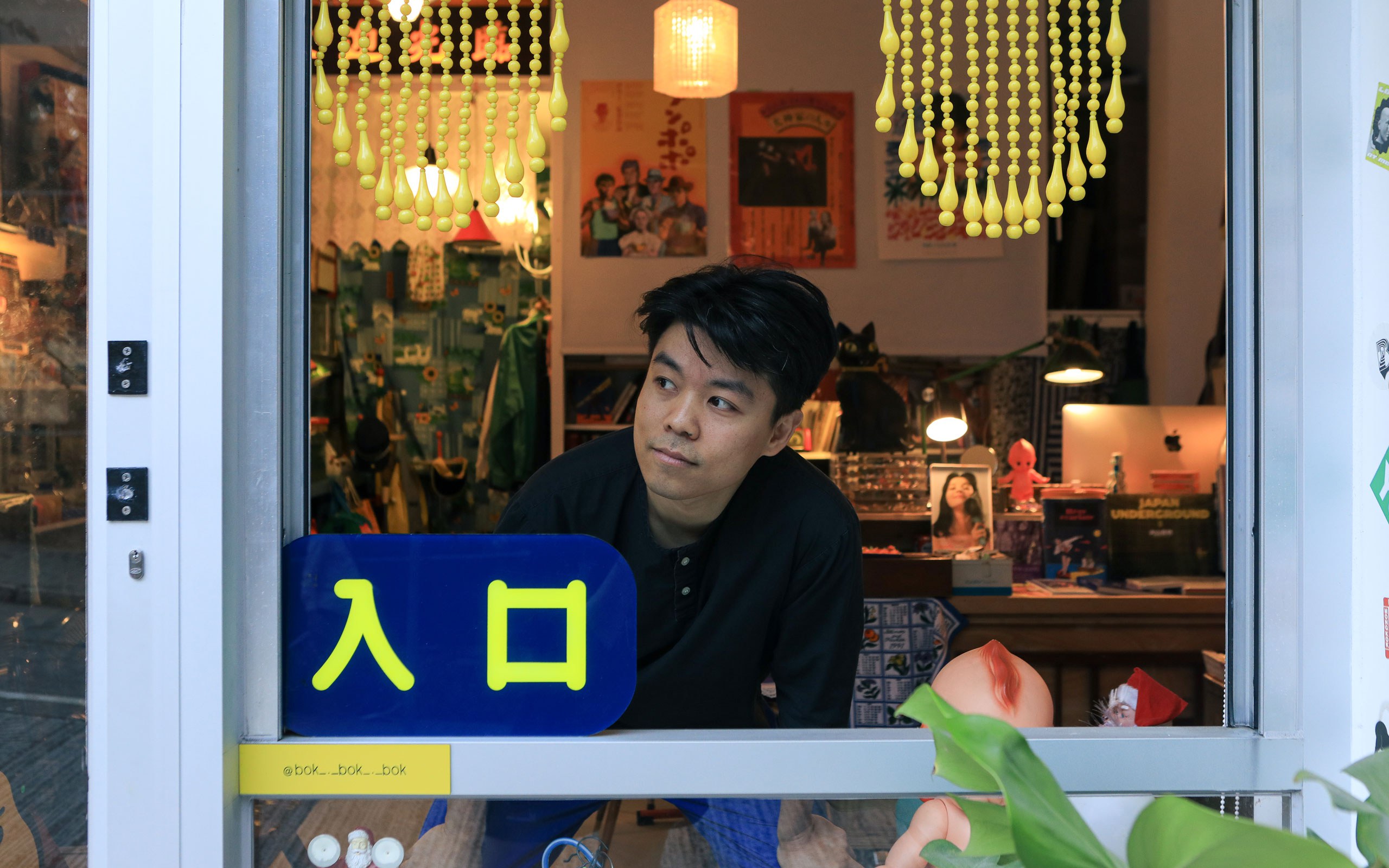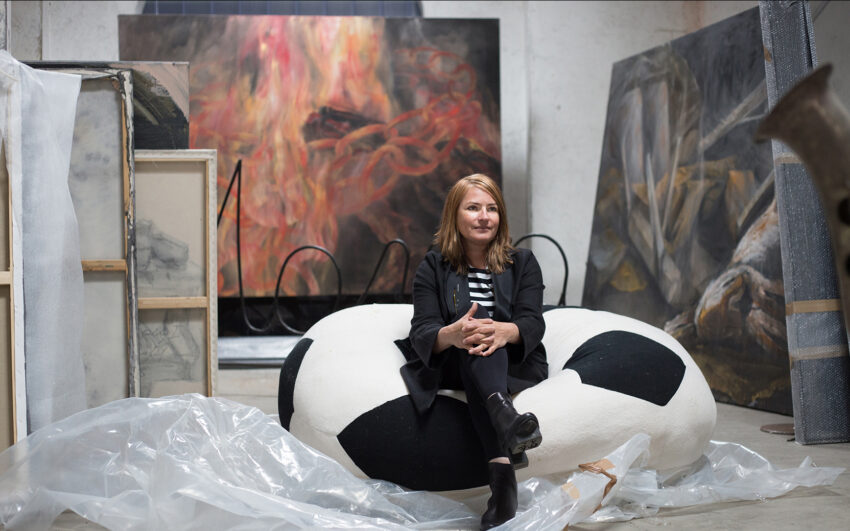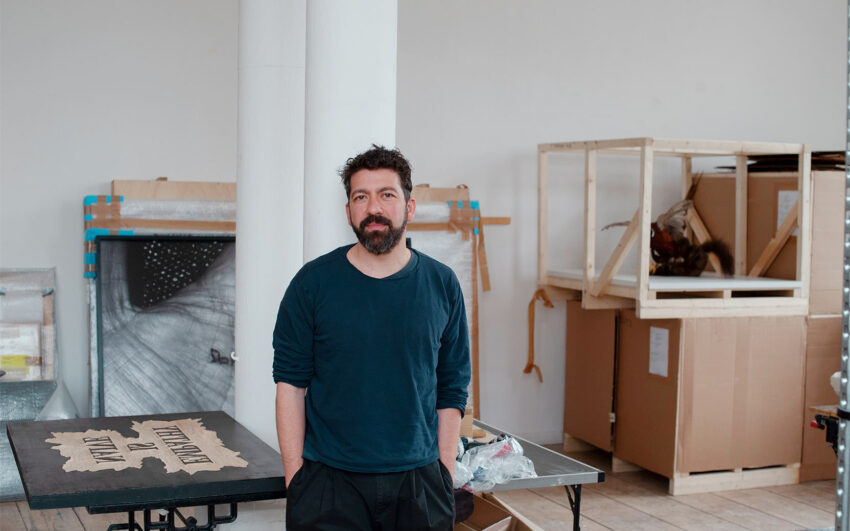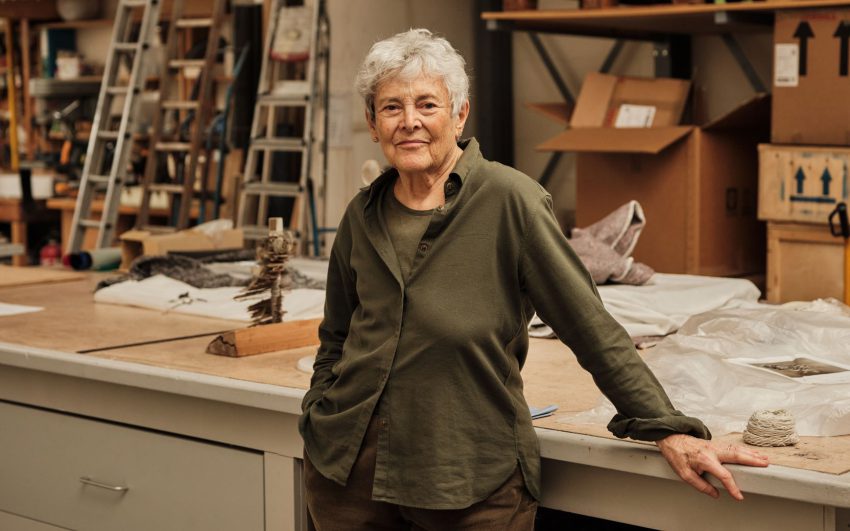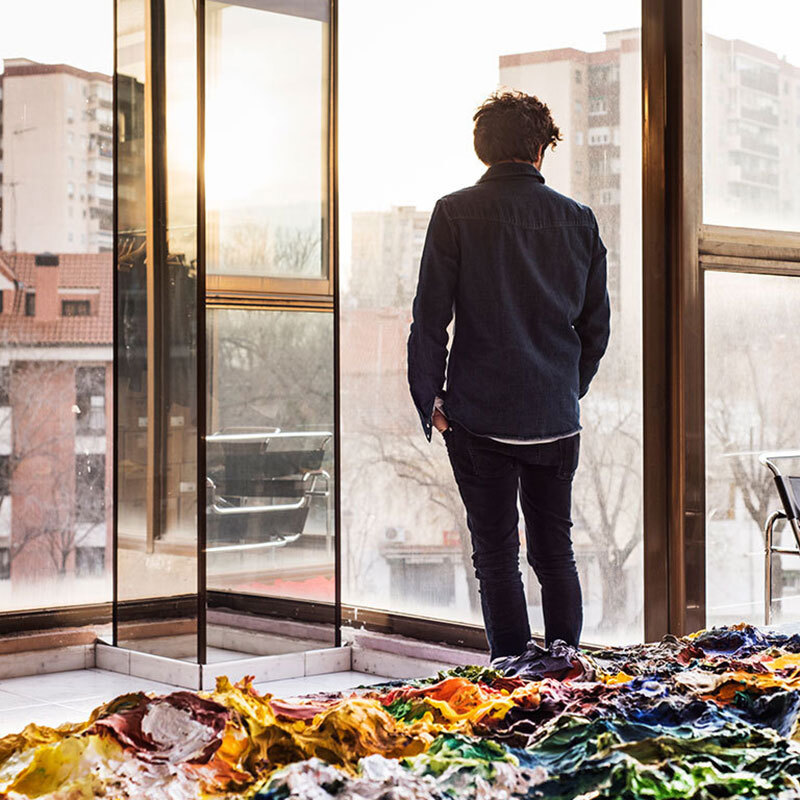Originally from Hong Kong, Wong Ping studied multimedia design in Australia and then worked in post-production at a Hong Kong television station and at Cartoon Network. His eye for the bizarre in everyday life and his experimentation with software led him to the production of short animation videos, which he posted online. In 2014, he founded the “Wong Ping Animation Lab”, where he produces his short films. At the first glance, they may appear superficial and harmless due to their simple visual language, but they are multi-layered, complex and critical.
Ping, how did your work with animation videos start?
Well, I was playing around with the software from the broadcaster I was working for. It’s actually not designed for making animations, but for postproduction. However, I managed to draw a frame; I picked out my favorite pastel color combinations – similar to my work now – and it was so exciting! For the first time, I felt the joy of creating through a medium.
How did you come up with the stories you wanted to share through this medium?
It all started in 2013/14, in a dilapidated industrial building. I had gotten fired from my previous job and rented a studio to work as a video creator – that was quite pretentious (laughs)! Especially as I didn’t get any work for two years. Once, I got to know my neighbor, a very pretty girl. She was a pop singer from Malaysia, trying to start her career. I found her videos on Youtube, started imagining things about us and consequently wrote my first story about desire: about going to her apartment and collecting her sweat to make ice lollipops.
I need to ask now: Did you ever go over in real time to meet her or collect her sweat?
Yes, I once went over with a friend, but all we saw was her half naked boyfriend (laughs). However, it was the initial meeting with her that inspired me – desire or sexual content is only the container for my inspiration. I just use it to kick start my brain. The story then writes itself. I often use sex in a story, but to me, the writing process is much more important; sex is just a tool.
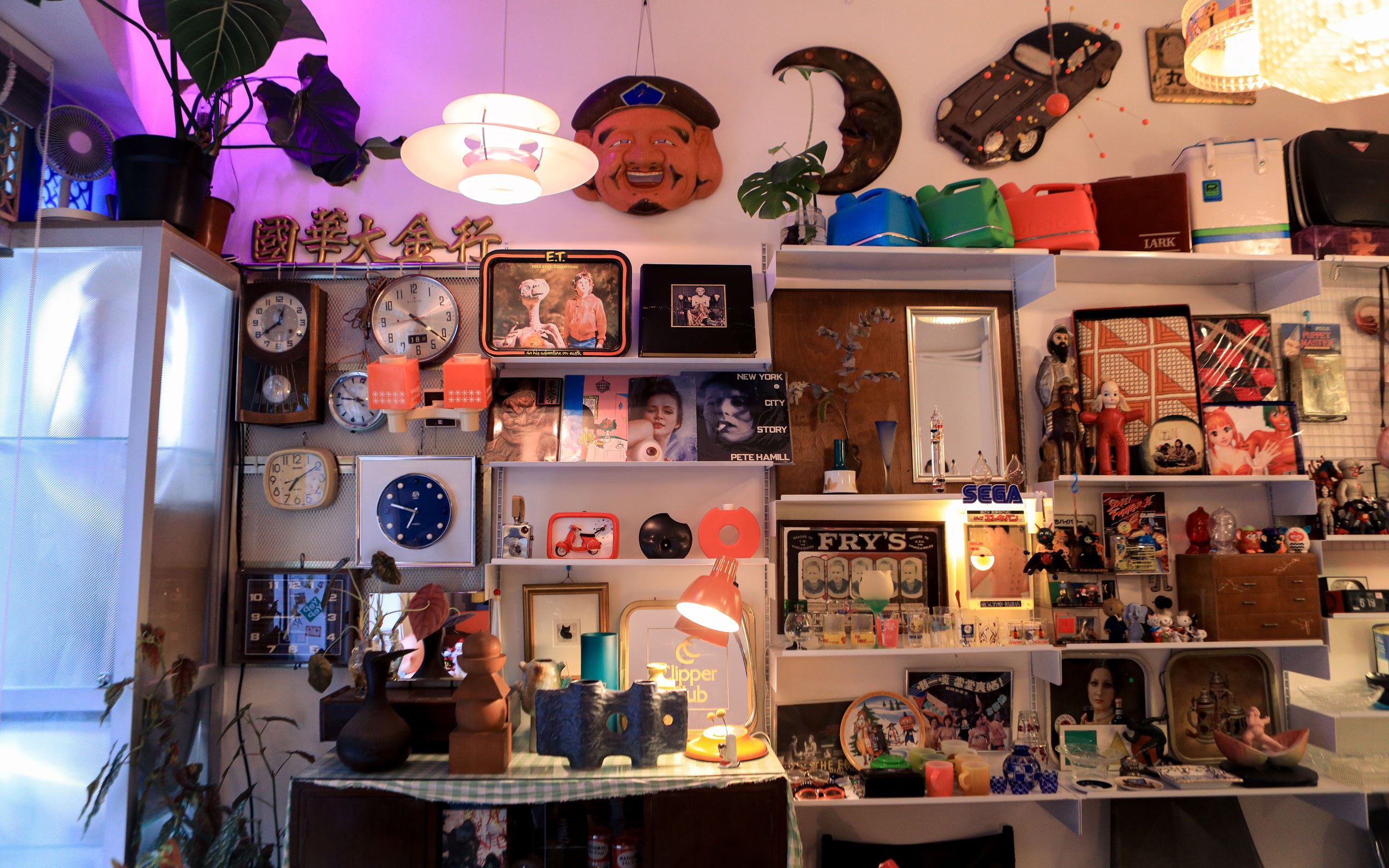
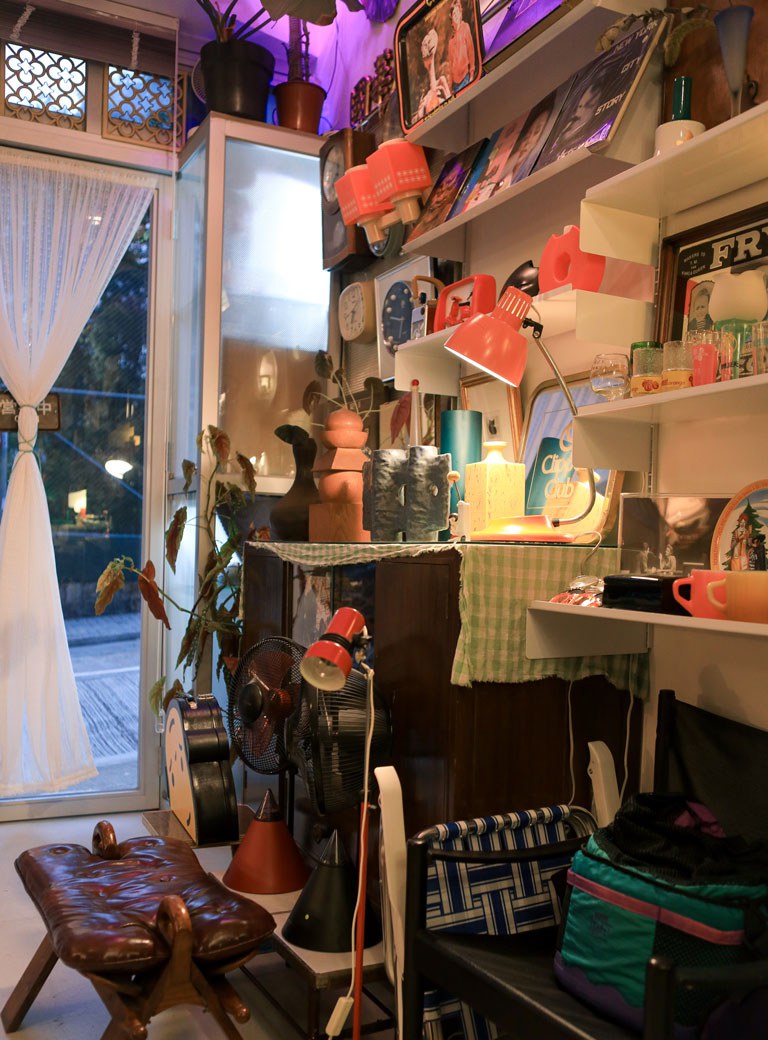
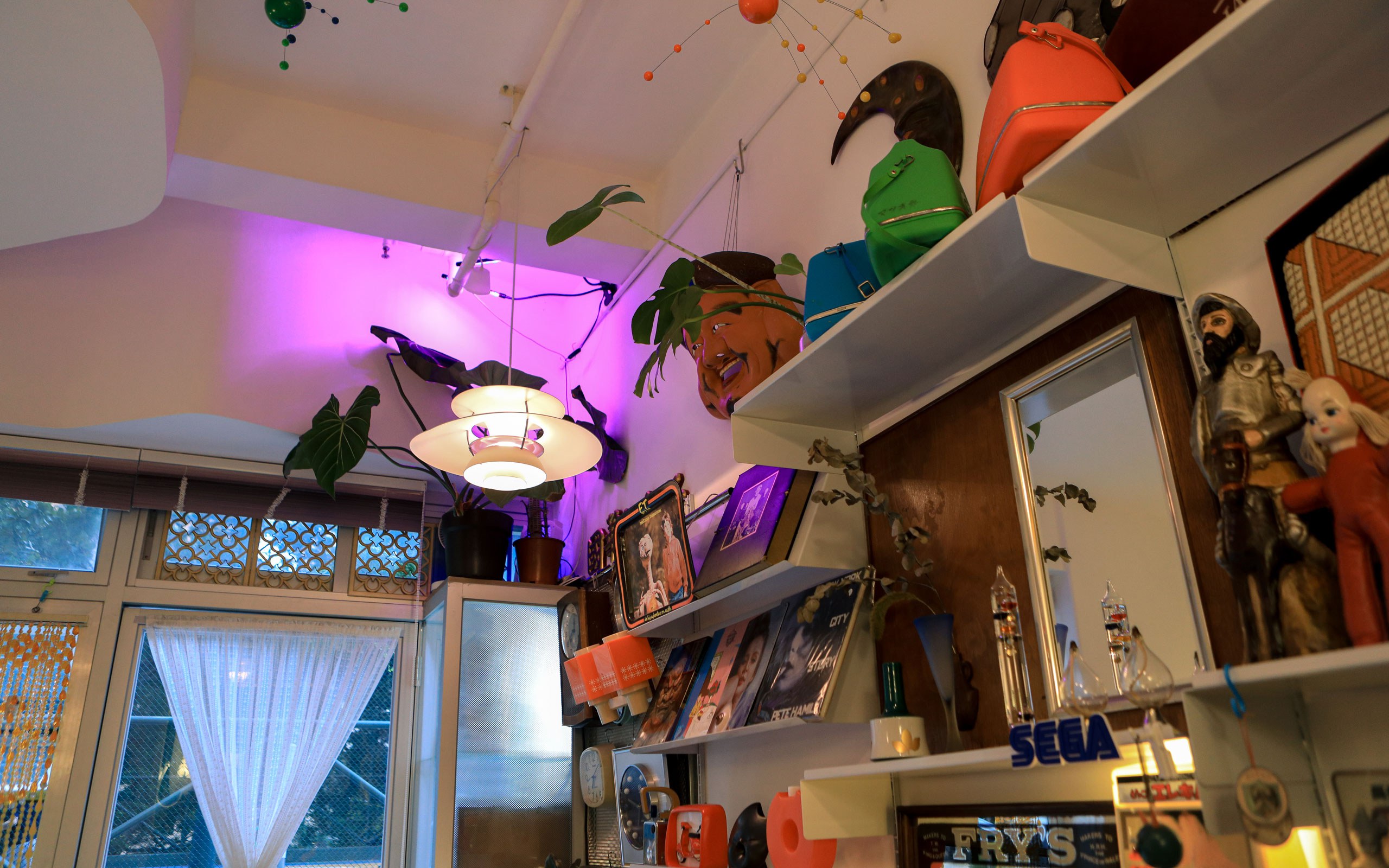
Do you see yourself more as a writer than as a visual artist?
I would say I enjoy both the writing and animation process. But they are very different. You are right I put more effort and heart into the writing while my animation skills seem not to have improved from when I started. I never took the time to learn the programming language properly. That’s the thing about animation or technology: It’s a never-ending chase. There is always better technology waiting to be discovered. I can never catch up. I have better things to do.
Therefore, you decided to stick with what you know?
I have this limited skill set, but I would rather push it to the maximum than jump into other technologies like 3D or AR and such. Like the sushi master Jiro Ono from Tokyo spending his whole life mastering the craft, only for sushi. He did not jump into making hipster coffee to prove anything.
Did you ever ask anybody for help with the software?
No. I’m good enough with shape and movement. That is all I need. I learned about rotation later, about how to move a hand. And I even know how to make gradients now – apparently, learning it was just one click away (laughs)!
How do you develop a story?
It is really hard to tell. It often takes me a long time, sometimes months, but fortunately there are deadlines (laughs)! I don’t have a diary, but I like to collect incidents of cliché and ridiculous moments in public. There are lots of materials out there, even though they might appear ordinary. It depends on what angle you look at them. Even trash has its value these days, right? I also just opened my studio in a street front shop. I found it interesting to talk to the strangers coming into my studio from time to time. I have been longing for jumping out from the algorithm of life.
Do you find your inspiration in the streets then?
Very often! In Europe, I find it more difficult though – the public is so calm and nice here in Vienna. In the name of creation, I need to be in a more chaotic environment, like Asia (it’s crowded population wise). I am not the kind of creator who can sit in a cafe and write, I need to force myself to constantly move. I once heard someone say that we have a second brain underneath our feet: I strongly believe that. But inspiration can come from everywhere. Once when I was riding my bike in a park in Hong Kong, I saw an old man dragging a large bin bag to the dumpster. I got curious. So, I waited until he was gone, opened the bag, and discovered a heap of vintage Japanese porn VHS cassettes in pristine condition! My head started buzzing: Why throw them away now? How do we watch porn today? – and so on. Consequently, I wrote a story about technology and retirement homes in Hong Kong. In this case, the bin bag was my container, and I used it to kickstart my work for a show at the Guggenheim Museum.
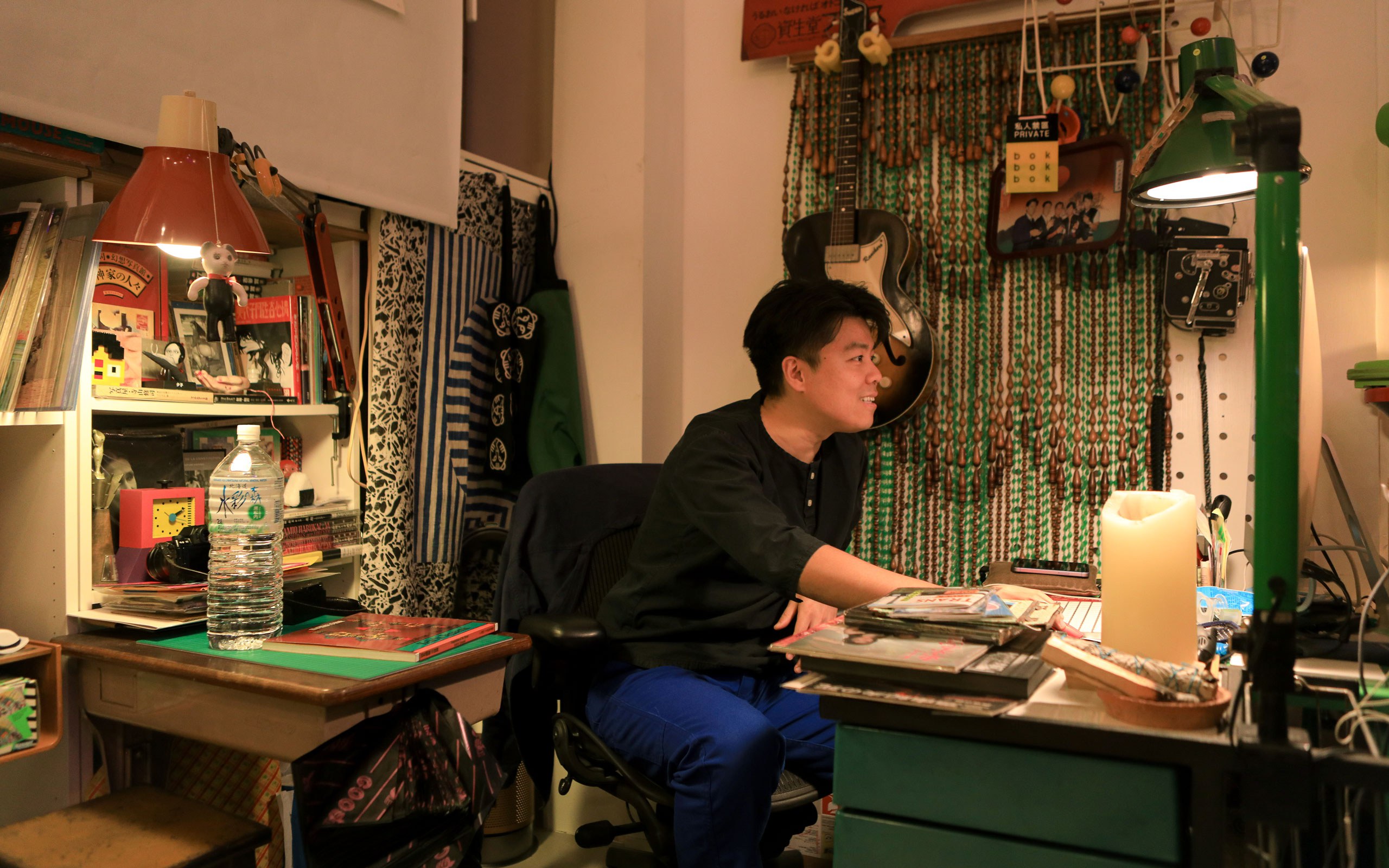
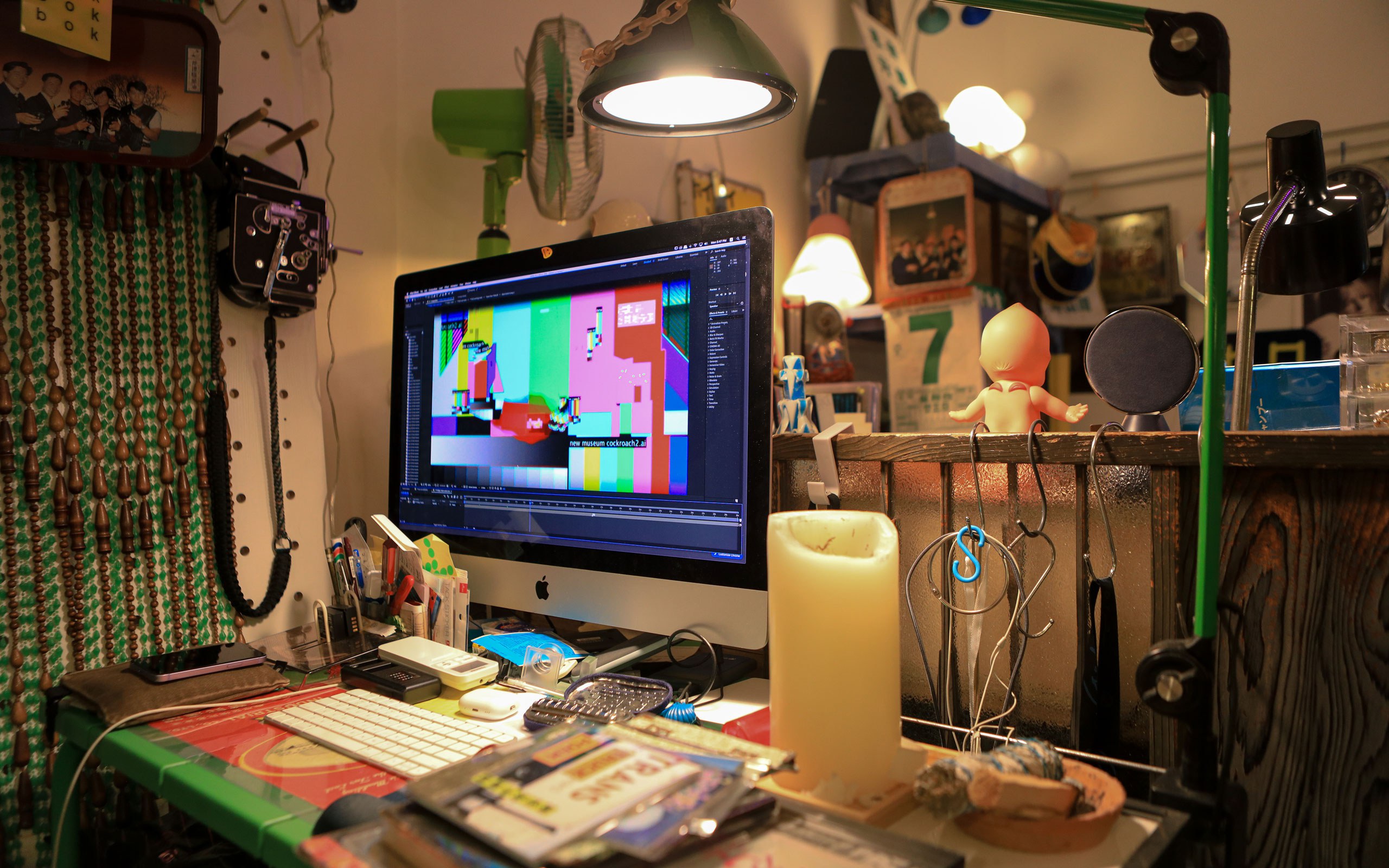
Do you feel your work has evolved, even though you stay in what you call your small skill set?
The way I approach the storyline has changed. It used to be very much topic driven in my early works. I do not have a solid topic when I start to write now; I lay out hundreds of little thoughts as layers to build up the big picture. Thoughts are often not related to each other in the work, I do not care about any of the transference and resistance they teach in “Creative Writing 101”. The writing process becomes more fun, very much like driving a vehicle and losing control, trying my best to get the vehicle to somewhere unknown. I hope the audience feels the same. I mean, that is also one of the charms about short films. Some say the rhythm and the charisma of shorts (experimental shorts) is closer to dance as an art form.
Your approach regarding layers etc still sounds quite professional…
Not really! For instance, when recording the voiceover for my movies, I use only my phone and I don’t have a soundproof room, so I just hop in my bed and hide under my blankets. Then I tape myself reciting the text. As I do not have the patience to re-record or to edit, I have to deliver it at the right pace the first-time round. It’s funny that people often describe my voice as deadpan – because I really tried to act when I was starting out. But it was terrible! Only reading without any emotion makes listening to myself bearable at all. Then I transfer my voice to the software and the visuals follow the pace of my voiceover.
You were talking about the layers in your work – why are they important?
The layers are needed if I want to make my works endure, rather than to just make a quick judgment. For me it is more important to reflect than to react. Reflection needs time and distance. Fables could be an example; they are often stories with layers but not directly referring to the solution itself. Some fables are classic, and this is because they can be put in different periods of time and place, and still be relatable. There is a difference between making love and one-night stands. Making love is complicated.
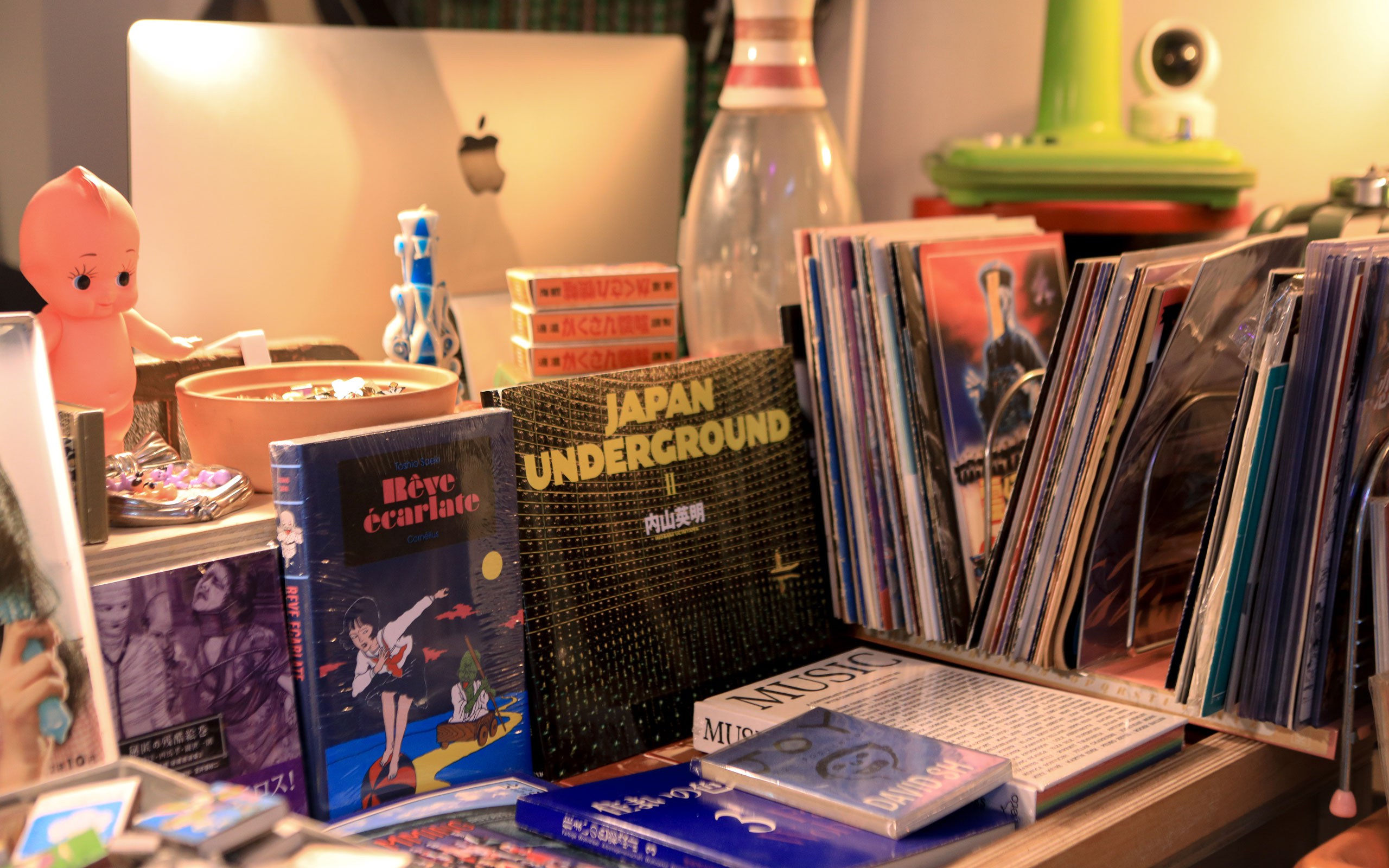
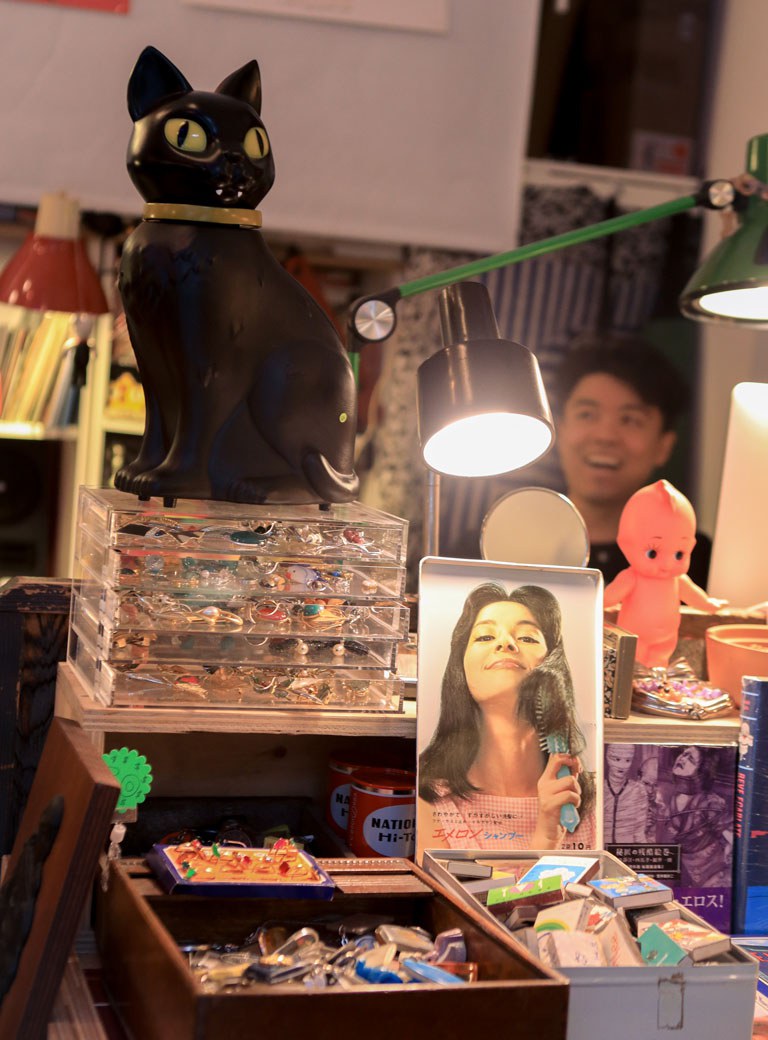
You have been mentioning that you felt not qualified to create “academic” art at the beginning – does this have to do with lack of education in the subject?
I felt insecure in the beginning. I had no idea what it meant to produce an “artwork” or how to show in an art space. Regarding my work, I think it is more about not understanding (or trying to understand) what making it means to myself. It has always been a hobby. From having started out in the virtual space (the internet) to meeting a curator – of whose role I had no idea at that time – it was tough for me. I had just been making work online until then; but suddenly, after only one show, people called me an artist. So, what does it mean? The curator asked so many questions about my works, I felt like I was being forced to figure myself out, to face myself. Even my social media handle is named “no why no why” because I have always been creating work using my instincts. It was not fun to have to understand myself more, but don’t get me wrong, it is a process to make progress. There were just some adjustments that I needed to make at the time.
Did the curator make you feel insecure?
You can put it that way. The insecurity stems from stressing about these expectations. For instance, I had no idea why I wanted to put the screen high up for this show. When I look back now, it was a good way to be challenged to the point that I almost cried and hid back in the internet world. I didn’t want to deal with this real-life thing.
It takes courage to face this…
Yes indeed! After that, I learnt something I never knew before; I understood my thinking process a little better. I now figure out the next step and dig deeper. Before that, most of my work created on the internet was only naughty (laughs). It is like the knowledge that I am not going to still be singing pop punk songs in my 40s. That would be gross.
You learned on the job, so to speak?
You know… other artists have to search for their identity, their language, the approach of their path. I could feel their struggle. I feel lucky that I had no such preoccupations. I am glad that it started as a hobby instead of a career. It gave me the space and time to make things without considering much of the why and how.
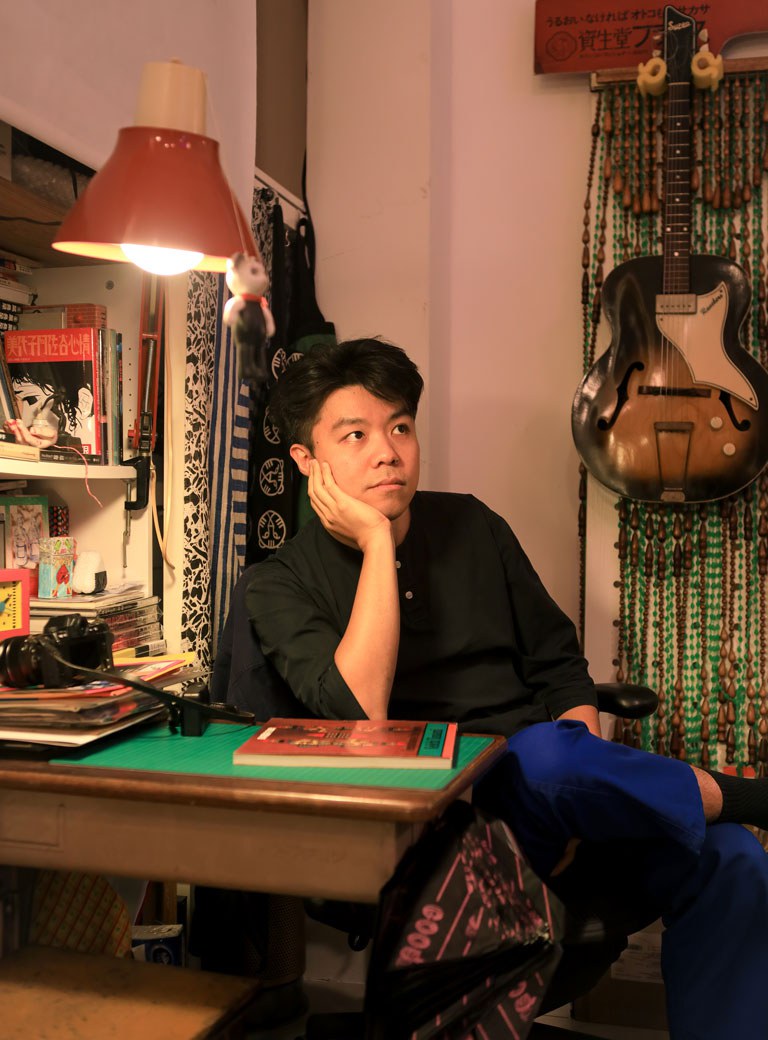
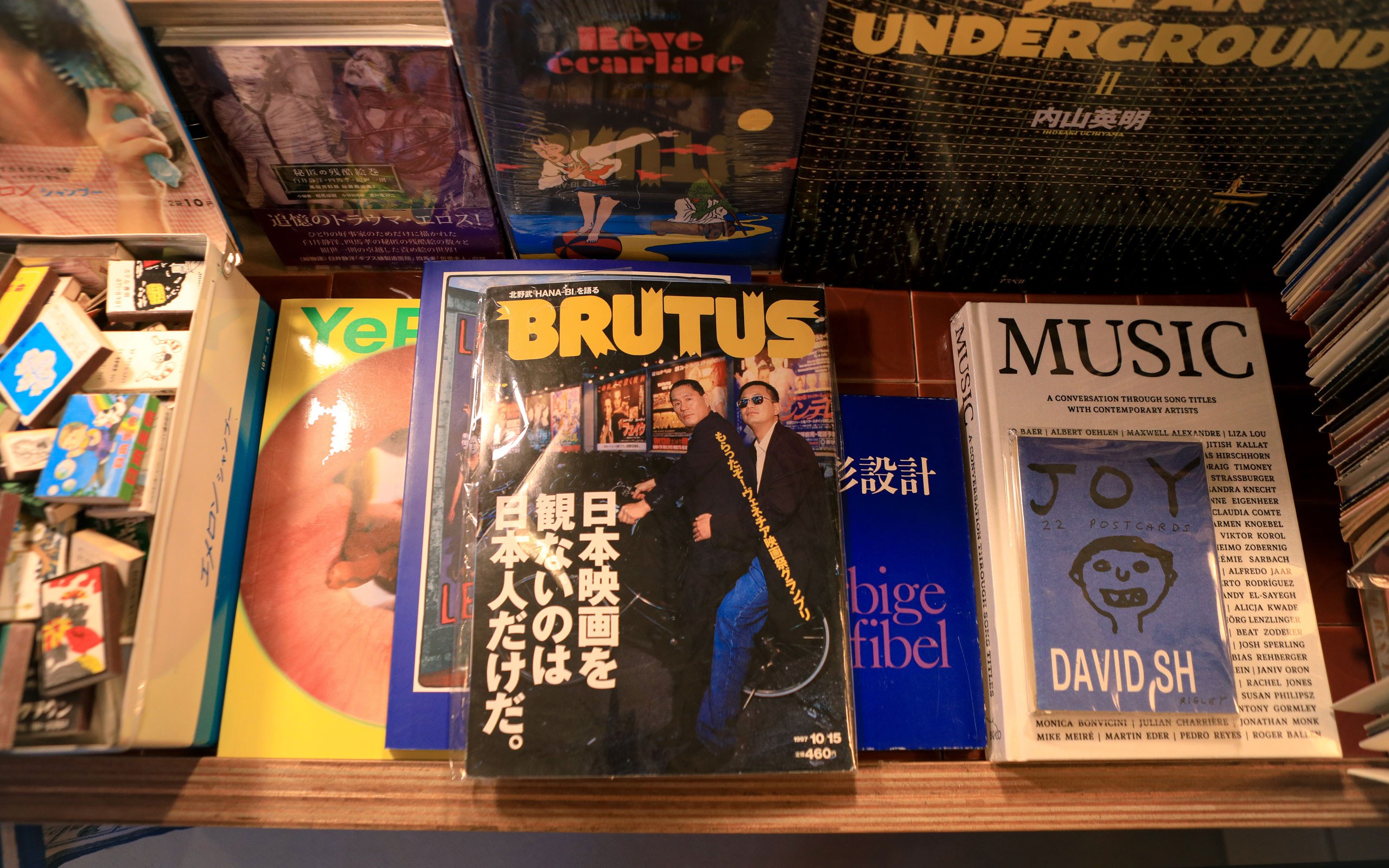
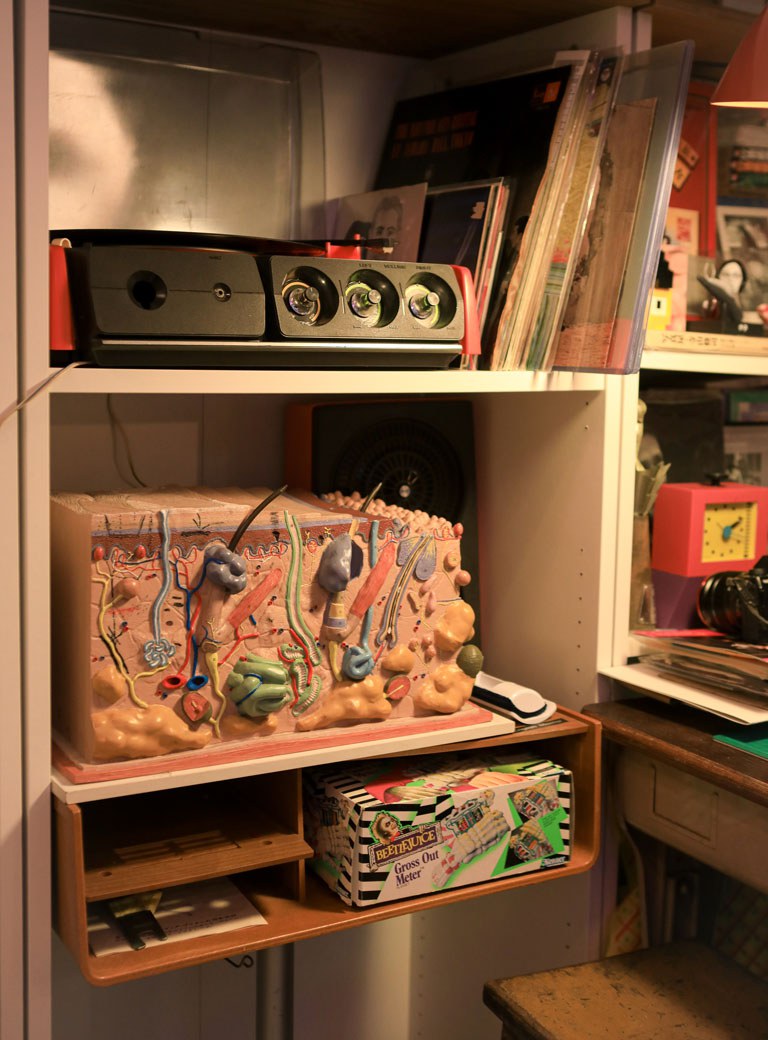
At your exhibition in Vienna, you are showing, between other works, Wong Ping’s fables. Do you want to teach your viewers a lesson?
The Fables always end with one or two sentences to resume the lesson learnt from the story. But the lines I put at the end of each video are just crap I made up or some weird advice – and who cares what I say to the kids anyway, that is the parents’ job!
So why make fables at all?
Well, I needed to make new work for a show (laughs)! I always wanted to do something related to children. So, I researched about fables; it seems every kid knows the name of the fairy tales and fables, but no one has really read them – nor had I. I realized they are neither practical nor relevant in a modern society, which bombards you anyway with moral lessons from the day you are born. Basically, we all understand the importance of being a good human being but life ain’t nice to everyone. It shapes us, forces us, twists us to follow many different paths, that might take us far from being nice. My fable is to tell the fact that we better face it, prepare for what is coming to us in life, and admit that we are not going to be able to fulfill everything that is being asked of us.
Whose voice can be heard in the fables – it’s not yours, is it?
Well, I usually use my own voice. But for the fables I use AI, and make it sound like a heavenly mother’s voice. I think it’s the bedtime story cliché of the mum reading. It gives me this warmth, and at the same time the distance and artificiality of AI.
Have you ever thought of doing the voiceover in English instead of Chinese?
No, the videos are subtitled anyway. Whatever we watch on the streaming platform these days, it is always preferable to listen to the original. The more I travel with my work to non-Cantonese spoken cities, the more I realize my voice is just some background noise to the viewers. By now, the pace of my speaking is faster and faster though, because I have a lot more to say! Therefore, the reading is accelerating too. People have less time to look at the pictures, it is a trick to make them watch the video twice.
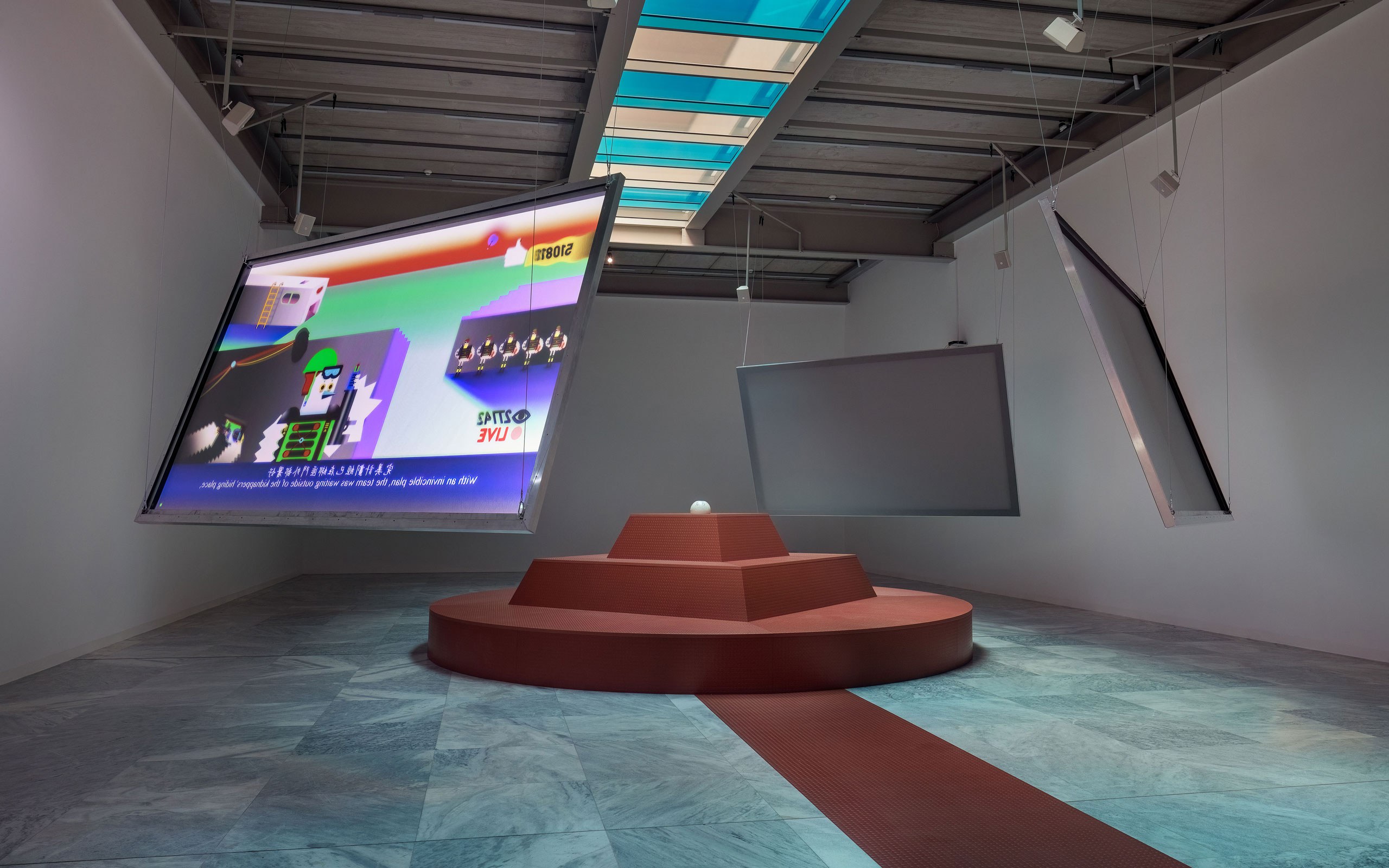
MAK Exhibition View, 2023, WONG PING. edging, MAK Contemporary, Courtesy of the artist, Tanya Bonakdar Gallery, New York / Los Angeles und Kiang Malingue, Hong Kong / Shanghai © kunst-dokumentation.com/MAK
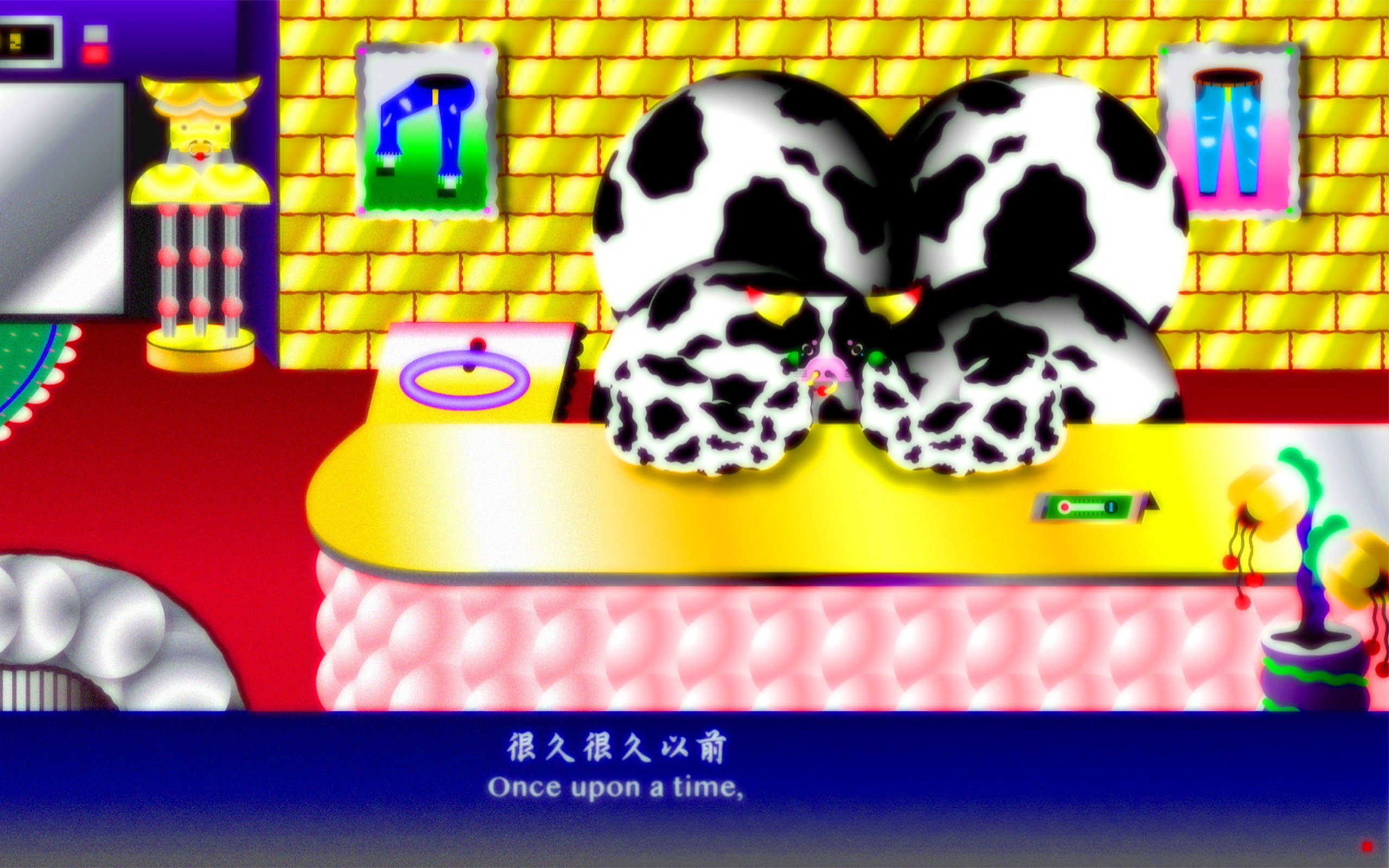
Wong Ping, Wong Ping’s Fables 2, 2019, Single channel animation, 13 min, Edition of 5, 2 AP, Courtesy of the artist, Tanya Bonakdar Gallery, New York / Los Angeles and Kiang Malingue, Hong Kong / Shanghai © Wong Ping
Having enough time is an issue nowadays – don’t you feel our lives are rather full?
It’s a lot, from the moment you are born. I like to observe our decision-making behavior. And obviously what we decide to make time for is one of the big issues these days, because not only do we need to satisfy our families, friends, lovers, work, but also ourselves, the me-time.
Me-time is a very popular concept… the same goes for Self-help books.
Exactly! That is another issue I have with the world (laughs). Why do they exist? I mean their popularity must reflect what happens in society, which is another interesting topic. These books could stress people out by always chasing for positivity in life. In my stories, I would rather start with the failures… Basically, I offer a different self-help perspective!
Do you sometimes feel overwhelmed yourself?
I think we are facing a lot of overwhelming and unsettling things. We had time to digest any new waves in the past. Social media gives us the illusion that we have to know and comment on everything that happens around us. Everything is being thrown at us at a rapid pace: new technologies, another war, who got canceled, crystals, new ways to make coffee, AI… it’s stressful to keep up, leading to what we call the fear of missing out.
Talking about overwhelming: What is the situation in Hong Kong like? Your show in Vienna, at the MAK Museum, is called edging – do you ever cross the line?
Crossing the line is easy but often it will become problematic when it is not related to an objective. Statements could be taken out of context, and unnecessarily misinterpreted. I prefer to step on the line as a way to be provocative. Like a mosquito flying around your ears at night instead of sucking the blood. And there is another aspect: edging as a sexual practice has some similarities to life in Hong Kong these days. Who promised the climax would be great if we hold the orgasm? What if it does not feel the same as promised? Why do we have to suppress the coming orgasm? What if we cum accidentally? Do we get punished? Who is the S and M? What if we are not edging towards orgasm but tragedy? Can anger be edging?
Did any work of yours arise from the protests?
There is a work I made for ICA Miami in 2018/19, during the most intensive time of protest in HK. It was tough because people took to the streets almost every day. I did not have any energy to think about making art. The idea of art and artists as a force to change the world was being challenged. Direct action seemed more efficient than any art at that moment. Concept and faith became fragile.
How did you deal with it?
Well, the crew from Miami flew over to HK to do this documentary about me, and I had nothing! So, I took them to the famous fortune telling street, to ask a fortune teller about my exhibition. Two blocks away a large protest was unfolding; to keep track of its participants, the police kept showering them with blue water spray; everyone was covered in blue. When the fortune teller asked me what went through my head, I said “shower” and “blue” – and the lady said – “ah modern, something about shower, something about blue” … And this ended up being my title: The modern way to shower. It is a work showing my phone screen while I go online in a live sex chat. I used the chat room as a therapeutic room, with a lot of other message windows popping up. Viewers could see at the same time news feeds about the protest, the message with which I commend the host to strip, the chat window in which I told my mom I was safe on the street; I texted and lied to my friends that I was protesting outside… These all just to reflect my mental stress as well as the one of my peers during the time.
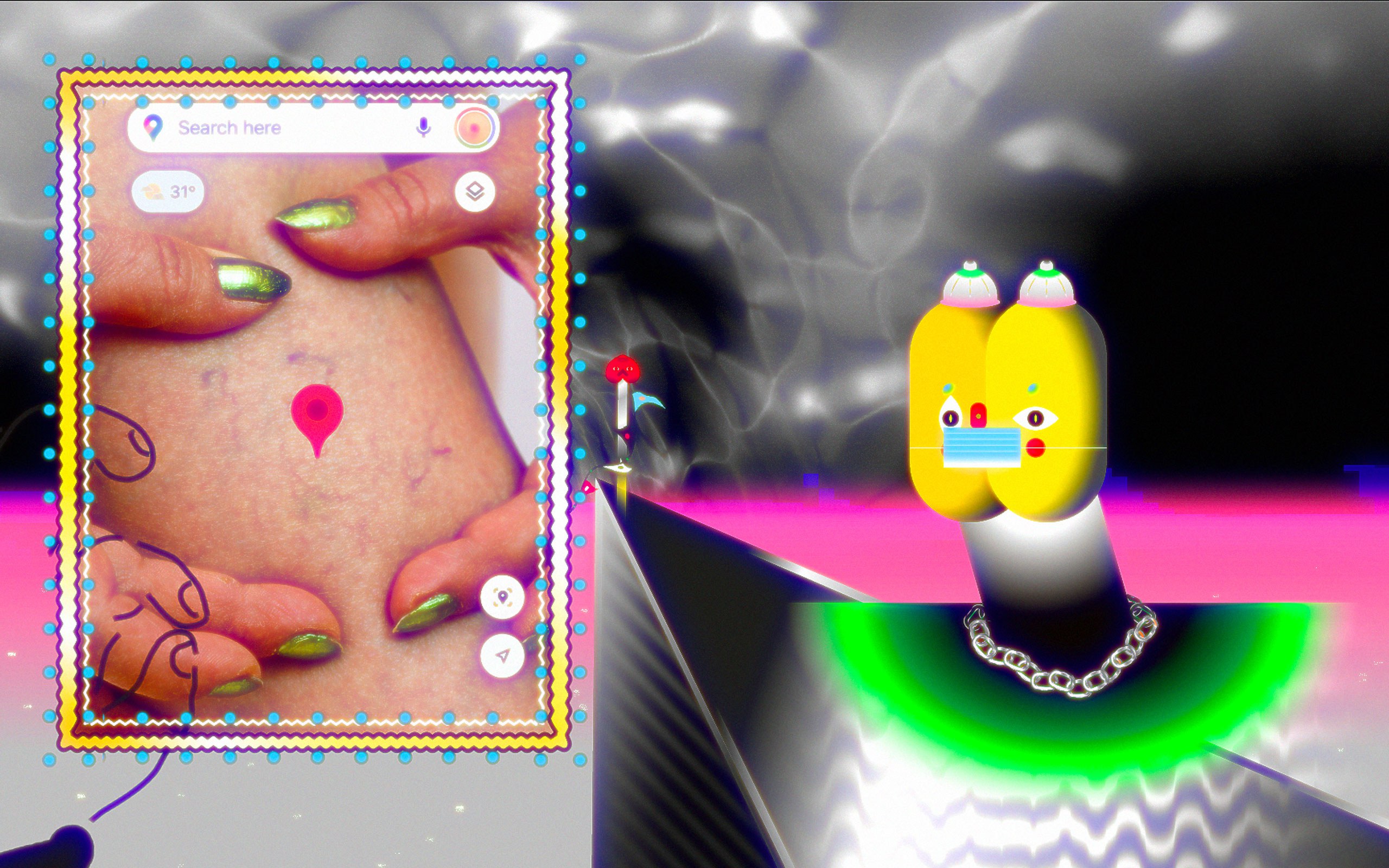
Wong Ping, Sorry for the late reply, 2021, Single channel animation, 15 min, Edition of 5, 2 AP, Courtesy of the artist, Tanya Bonakdar Gallery, New York / Los Angeles and Kiang Malingue, Hong Kong / Shanghai © Wong Ping
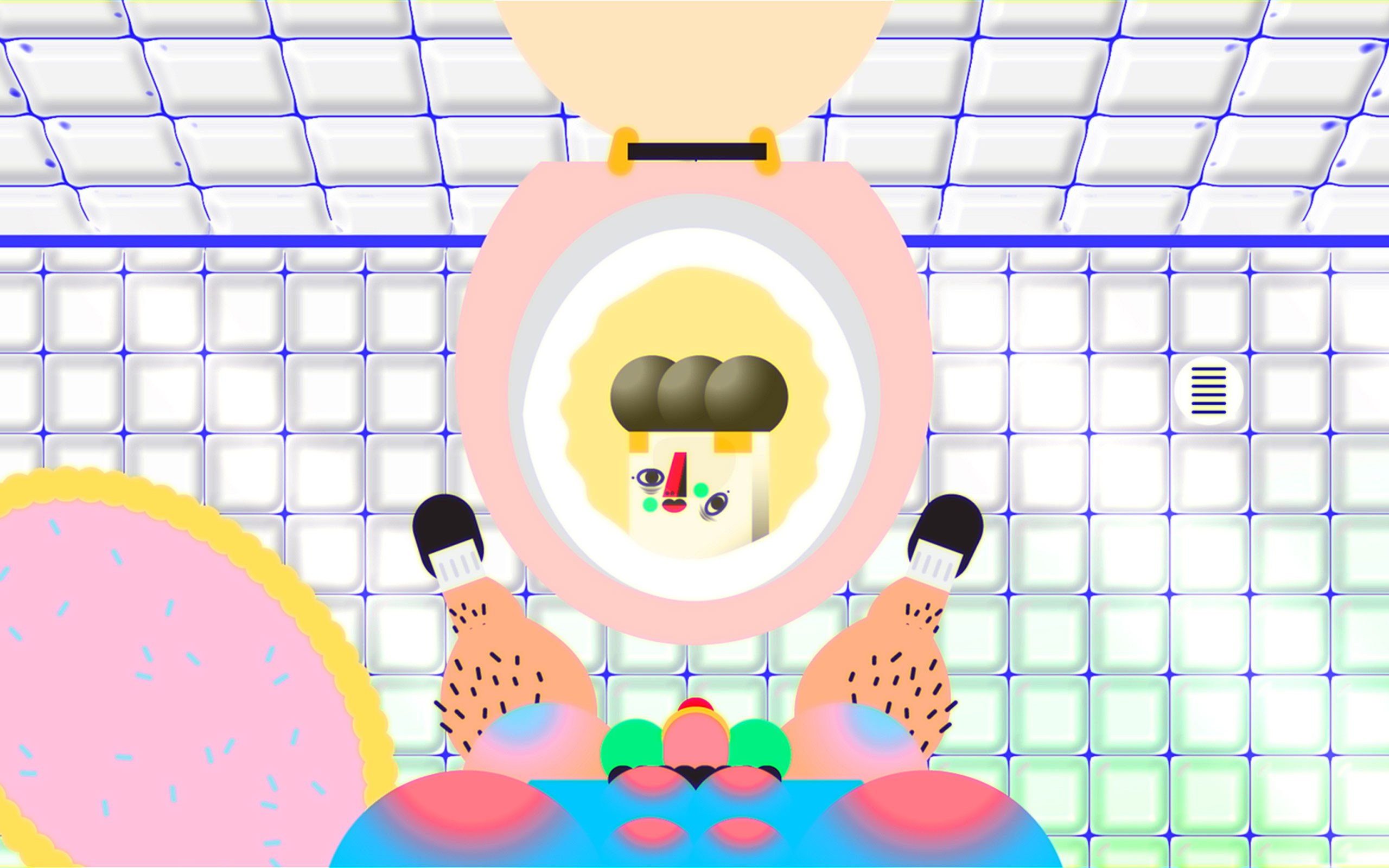
Wong Ping, Who’s the Daddy, 2017, Single channel animation, 9 min, 15 sec, Edition of 5, 2 AP, Courtesy of the artist, Tanya Bonakdar Gallery, New York / Los Angeles and Kiang Malingue, Hong Kong / Shanghai © Wong Ping
Is the fact that you use nudity and sex a problem when showing in Hong Kong and China?
In Hong Kong it is ok, but up to a point. I always think the unique historical position of Hong Kong gave the locals the illusion that we are progressive and liberal, but we are not. But then, isn’t it normal to have sex? Especially considering the population crisis these days, I think we should show porn on TV just to save the future. But no, not in China, my works cannot be seen publicly.
Even if the nudity you show is just animation, pictorial?
No, I cannot show my work. Everything that is about to be displayed, music or art, must be sent to the censorship department for approval. It’s just what the system is like, and I don’t blame the art spaces for not showing me.
Do you still show in Hong Kong?
It’s not forbidden yet. But I know the stress the cultural institutions are facing. It’s a shame seeing friends move away because of the shrinking creative freedom.
But you can still work?
I am still based in Hong Kong. People might not take animation seriously anyway. But then, it just happens that most of my shows are in Europe and the US.
Why do you think your art is translating so well here?
That is a question for the audience really! I just write what I capture. I have realized after a few years working in exhibitions, that it seems the audience abroad shares my thoughts and the topics I focus on. Obviously, technology moves everyone closer. We successfully globalized the same shame, the same sadness, the same jokes, the same Netflix dramas. Again, my work focuses on expressing the mental side and any kind of social norms. We are the same species after all; if I observe something over here, someone on the other side of the earth would probably act the same, like in the movie The double life of Veronique. And probably the medium animation helps too, it is universal. Also, it transpires that my use of sex as a language is very relatable (laughs)!
What are your next projects?
I am working on a gallery solo show opening in March 2024 at Kiang Malingue Gallery Hong Kong. There, I am going to show a work I made for Times Art Center Berlin last year, about earwax. I am also planning on a new work inspired by a book by Georges Bataille.
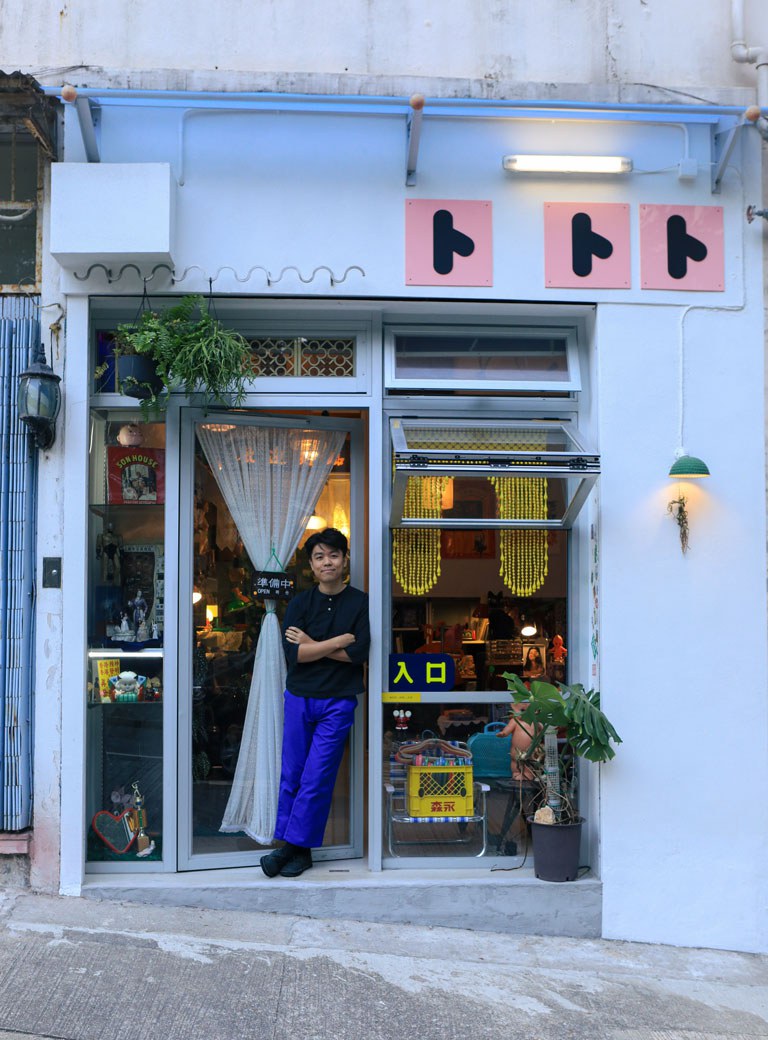
Interview: Alexandra Markl
Photos: Kelly Hebestreit


